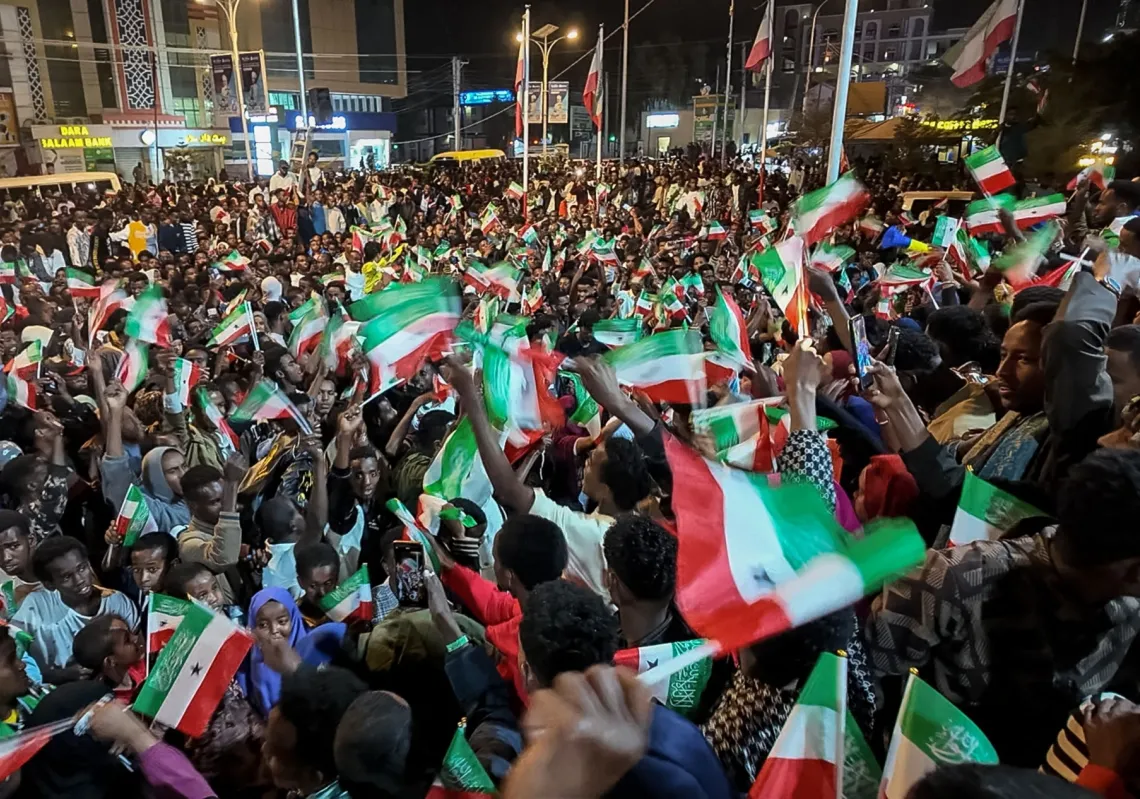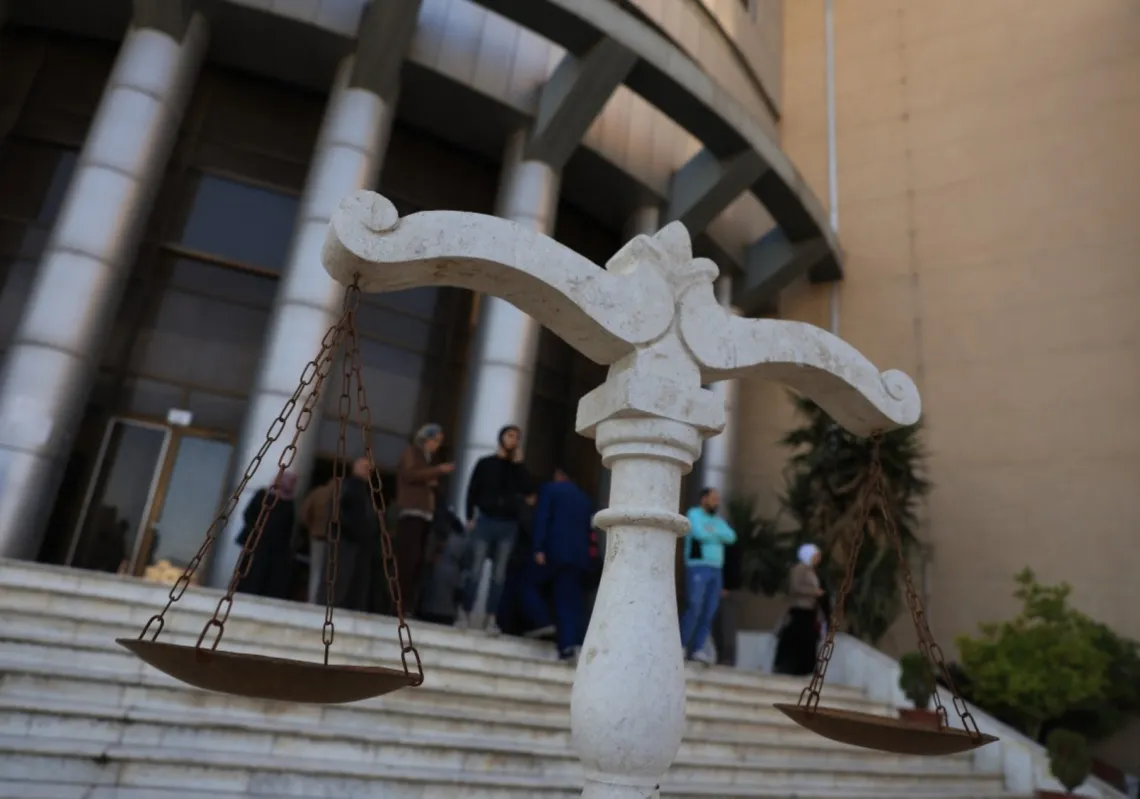In collaboration with FIFA, the Committee for Delivery and Legacy, the body in charge of managing the Qatar World Cup projects, chose eight stadiums to host the 2022 FIFA World Cup between November 20 and December 18, including seven specially built for this event that occurs every four years.
Only one of these stadiums, the Khalifa International, was fully refurbished to FIFA standards and reopened in May 2017 with the holding of the Emir Cup final, in which Al Sadd defeated Al Rayyan 2-1. The largest is Lusail Iconic Stadium, which was officially opened with a friendly match between Al Hilal Saudi Arabia and Zamalek of Egypt.
Here are the eight stadiums that will host the 64 matches in the Middle East's first World Cup:
- Lusail Iconic Stadium

The interplay of light and shadow that characterizes traditional Arab fanar lantern, inspired the design of Lusail Iconic Stadium. Its structure and facade also reflect the intricate inscriptions found on food bowls and utensils, as well as other works of art found throughout the Arab and Islamic world during the region's rise to civilization.
Among the eight venues, Lusail Iconic Stadium, located 16 kilometers north of Doha, has the largest capacity (80,000). It will also be the busiest stadium, hosting 10 matches in total, including the final and closing ceremonies.
The roof is an important feature of the stadium, which was designed by Foster + Partners. While it provides just the right amount of light to nourish that all-important pitch while reducing the demand on air conditioning, it is also intended to work in tandem with the stadium's curved sides to reverberate fans' cheers and help with the atmosphere during games.
Furthermore, because of the emphasis on sustainability during the design process, such as the use of recycled water to irrigate plants and leak detection systems, the venue conserves 40 percent more freshwater than conventional stadiums.
After the World Cup, the stadium will be transformed into a vital center that will benefit residents of the modern city of Lusail by providing schools, shops, cafes, sports facilities, and health clinics.
- Al Bayt Stadium

The design of Al Bayt Stadium was inspired by bayt al sha’ar tents inhabited by the peoples of Qatar’s deserts and the Gulf region throughout history, who lived as nomads in the Qatari desert in search of pasture and water.
Al Bayt Stadium, located in the northern city of Al Khor, just 35 kilometers north of Doha, will be the welcoming face for fans and players when Qatar takes on Ecuador on Sunday, November 20, and the Germany-Spain match in the group stage, all the way through to the semi-finals.
The seats in the upper section of the stands are designed to be disassembled after the World Cup.
FIFA President Gianni Infantino stated of the stadium during his October 2020 visit; "Al Bayt Stadium is fantastic: it's a true football stadium. It has a genuine football feel to it as well as a local flavor."
"The tented shape makes it truly one-of-a-kind, and the Arabic patterns in the roof are simply stunning. I can't say anything," he added.
The stadium was first put to the test in November 2021, when it hosted the first match of the FIFA Arab Cup, which pitted Qatar against Bahrain.
A shopping center, food court, gym, and multipurpose hall, as well as running, cycling, and horseback riding tracks, parks, and play areas, will be built within the stadium after the World Cup.
- Ahmad Bin Ali Stadium

The readiness of Ahmed Bin Ali Stadium (Al Rayyan), which is located in one of Qatar's most traditional cities, was announced during the hosting of the Amir Cup Final on December 18, 2020, which coincided with National Day.
The stunning stadium, designed by Danish firm Ramboll, features desert-themed design elements. The design was unveiled in April 2015 at a special ceremony at Ali bin Abdullah Fort, and its most striking feature is its glowing façade.
The 40,000 seat stadium was built on the outskirts of the desert, 20 kilometers west of central Doha, on the site of a stadium of the same name. Its undulating exterior is adorned with Qatari cultural symbols. The stadium's surroundings, which take the shape of sand dunes, reflect Qatar's natural beauty.
"One of the key features of the final design is the five decorative patterns and shapes that are found within the stadium façade and around the precinct," Ramboll project director Alan Tweedie previously said of the design.
This FIFA World Cup Qatar 2022 stadium will host seven matches during the tournament, up until the round of 16.
After Qatar 2022, the stadium's capacity will be reduced to 20,000 fans, and Al Rayyan Sports Club will be based there.
- Al Janoub Stadium

Al Janoub Stadium is located in one of Qatar's oldest neighborhoods. It is located in the southern city of Al-Wakra, 23 kilometers from Doha's center, and has a capacity of 40,000 spectators. This number will be reduced to 20,000 after Qatar 2022, and the stadium will be home to Al Wakrah Sports Club.
It was designed by the late Iraqi architect Zaha Hadid and was inspired by traditional boat sails, to preserve the heritage of Al-Wakra, an ancient coastal city known throughout history as a center for fishing and pearl hunting.
The sails of traditional dhow boats are meant to resemble the sails of Al Wakrah's seafaring past. It also employs an innovative cooling system, with under-seat ventilators keeping spectator areas at a cool 18 degrees Celsius. The roof of the stadium can also retract, providing much needed shade during matches held in the hotter months.
Al Janoub Stadium will host seven matches during the tournament, up to the round of 16.
Cycling and running tracks, a multipurpose indoor arena, pedestrian-friendly outdoor spaces, and a new school will be among the sporting amenities. A mosque, wedding hall, and market will also be built to promote local business and community, as well as tourism.
- Education City Stadium

It depicts a chapter in the rich history of Islamic architecture, the triangles form complex, diamond-esque geometrical patterns on the façade, which appear to change color as sunlight falls on them at different angles throughout the day. The façade puts on a colorful light show at night.
The stadium's sides reach up and envelop the pitch, keeping the arena cool thanks to an advanced cooling system. Other unique elements near the stadium include murals installed on the outside which were created by aspiring local artists and capture the spirit of football.
The stadium is 12 kilometers from the city center and is located in the heart of the Qatar Foundation for Education, Science, and Community Development. Its completion was announced in June 2020.
Half of the stadium's seats will be donated after 2022 to help build sporting venues in developing countries.
The Education City Stadium, which can hold 40,000 people, is expected to house non-governmental organizations dedicated to using sport as a development tool. The stadium will also serve as a sports, recreation, and social hub for students and the surrounding communities. In addition, a new school will be built near the venue.
- Al Thumama Stadium

Al Thumama Stadium's dynamic and impressive design honors Qatar's and Arab culture as much as it honors a new era of design. Al Thumama Stadium is designed to look like a gahfiya, a traditional woven cap worn throughout the region. The stadium is also very important, and it holds a special place in the hearts of the community that is felt throughout the region.
Al Thumama Stadium is the first World Cup stadium entirely designed by Qatari Arabs. The stadium was designed by the Arab Engineering Office, Qatar's oldest architectural firm. The team was led by renowned Qatari architect Ibrahim Al-Jaida, who also designed the new Ministry of Interior building in Qatar, the Doha Fire Station headquarters, and the former Qatar Foundation Administration building, which is now printed on the 100 Qatari riyal note.
Al Thumama Stadium will also be outfitted with innovative cooling technology developed in Qatar to allow players and fans to enjoy matches in an ideal atmosphere all year without affecting player performance or fan experience inside the stadium.
The number of stadium seats will be reduced to 20,000 post-2022, and the State of Qatar will donate additional seats to countries around the world that lack sports infrastructure, while the space of the upper stands will be used to build a 60 room hotel overlooking the stadium, along with a set of facilities that will be agreed upon with the people of Al-Thumama to ensure that their needs are met after the final whistle of World Cup 2022.
- Khalifa International Stadium

The Khalifa International Stadium was the first stadium to open after being modified and redesigned to meet FIFA's international standards in preparation for the 2022 World Cup in Qatar. This is due to the fact that it was previously one of the small stadiums that hosted local matches as well as some international matches with small capacities.
Originally built in 1976, Khalifa International Stadium is located in Doha, one of the most beautiful Gulf cities with a rich heritage and uniqueness that attracts a large number of visitors throughout the year, whether for tourism and entertainment or for business and trade.
After the number of seats was doubled, the grass stadium can now accommodate approximately 40,000 spectators. The stadium was also outfitted with cooling techniques that allow it to be used throughout the year without being affected by severe Qatari weather factors like high heat and humidity, as well as wind and desert weather.
The stadium, located 13 kilometers from Doha's center, has hosted numerous events, including the 2006 Asian Games, the 2011 Asian Cup, the 2019 World Championships in Athletics, the 24th Gulf Cup, and the 2019 Club World Cup.
Its roof is topped by two arches that represent continuity and is linked to the 3-2-1 Qatar Olympic and Sports Museum by a short pedestrian walkway.
Aside from the Aspetar sports medicine hospital, the Aspire Dome (the world's largest indoor multipurpose sports hall), the Hamad Aquatic Centre, Aspire Park, and specialist women's sports centers, there will also be a cutting edge training and education center dedicated to developing world class athletes.
- Stadium 974

Stadium 974 (formerly Ras Abu Aboud Stadium) is a stunning, ultra-modern stadium located on Doha's glittering waterfront Central Business District on the east coast.
This innovative and pioneering 40,000-seat stadium, designed by world-renowned architecture firm Fenwick Iribarren Architects, is made of recycled shipping containers and modular steel elements that represent Qatar's rich maritime heritage. Each container is a different color, making the stadium a truly appealing destination.
Many parts of the arena, including benches, containers, and even the roof, will be reused after the tournament. The stadium will also make way for a stunning waterfront development for everyone to enjoy.
It can hold 40,000 people and overlooks the Doha Corniche and the skyscrapers in the West Bay area. The stadium is 800 meters from a metro station. It will host seven matches until the round of 16 and is located near Hamad International Airport, 10 kilometers east of downtown Doha. In addition, it is the only World Cup stadium without cooling technology among the eight.











